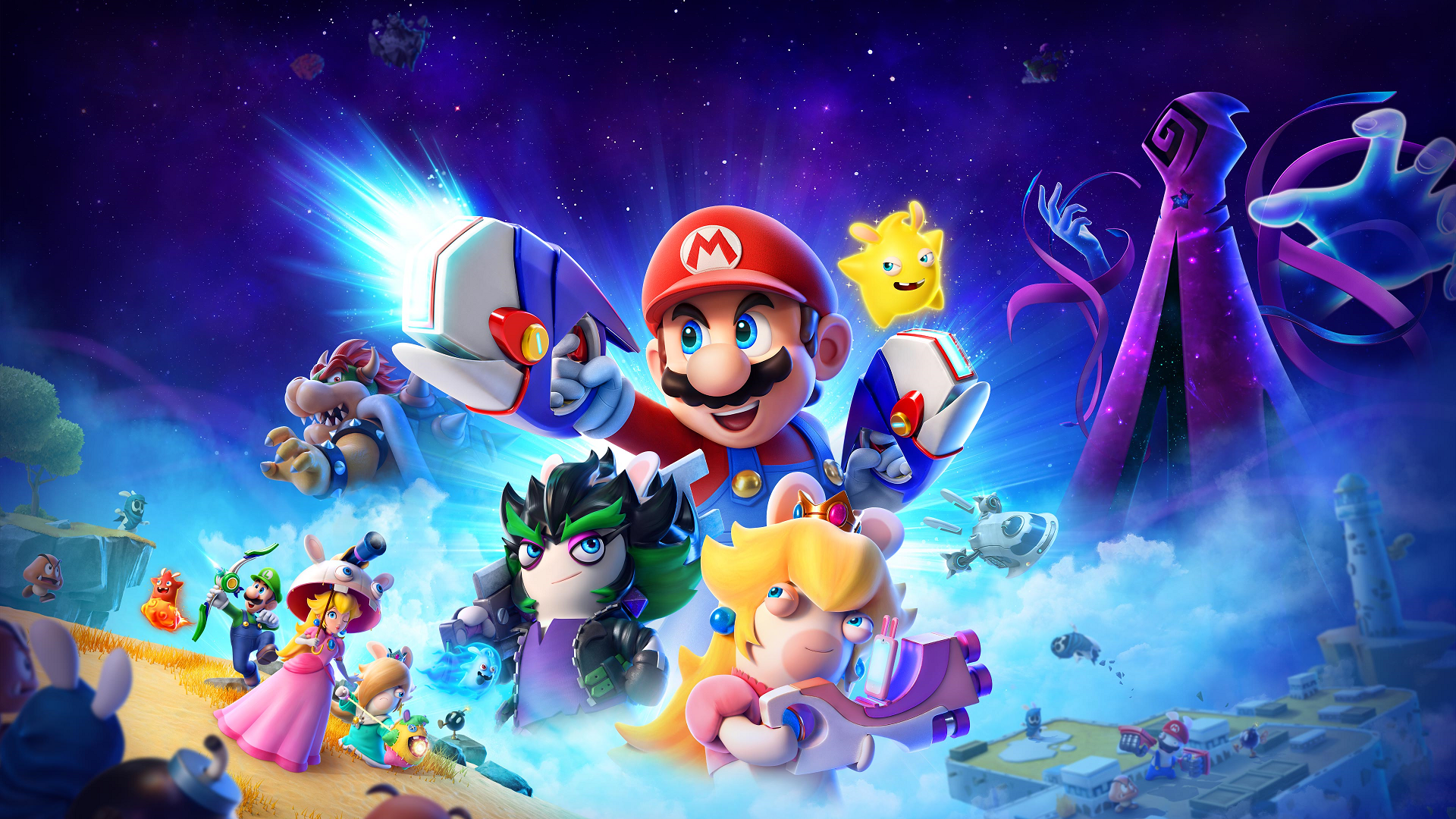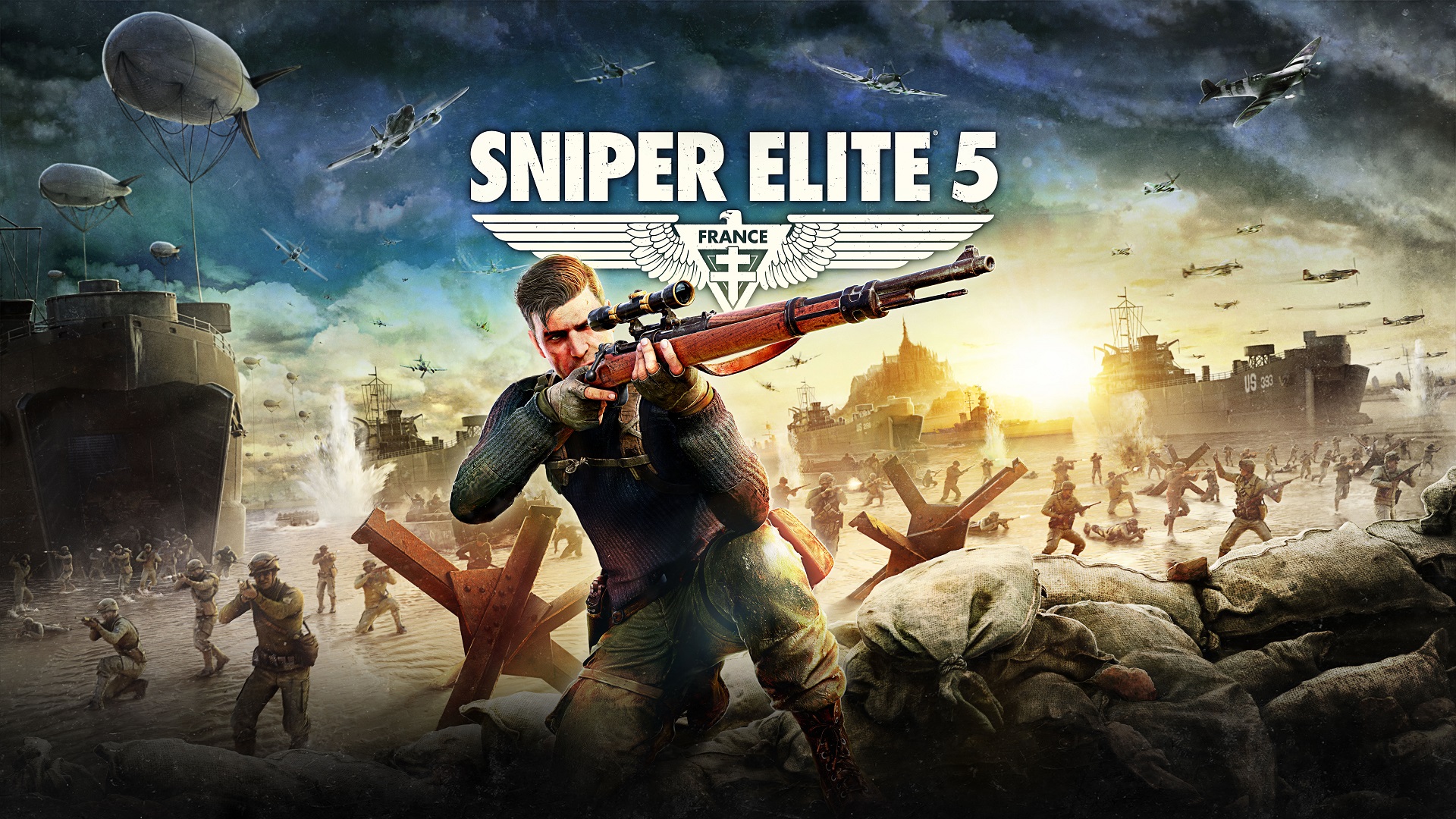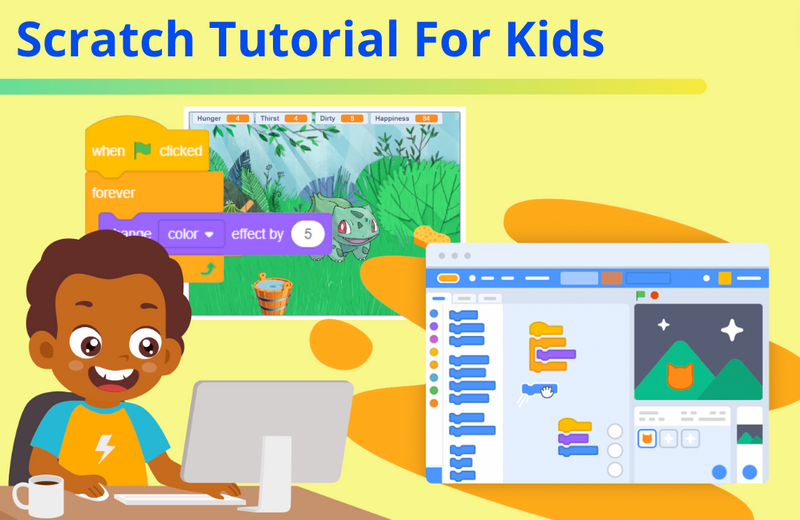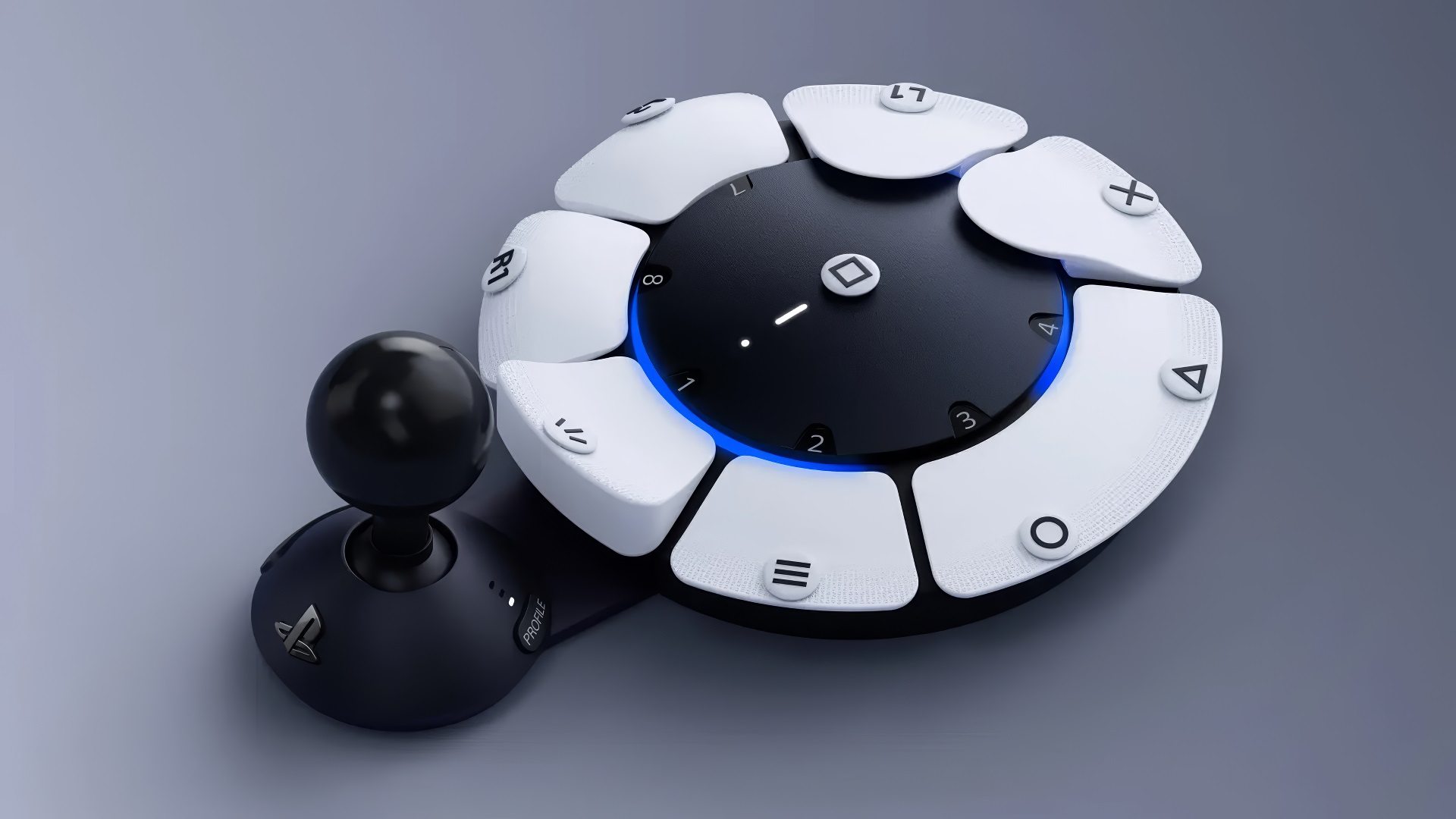Review copy provided by Ubisoft.
Introduction
I was introduced to the idea of the Mario + Rabbids franchise when I saw the first game Mario + Rabbids: Kingdom Battle. It was an odd concept and not one that I would have put together myself. I wasn’t really a fan and forgot about the idea. Until now. As the game slid into my mailbox, I looked at it with interest as I’m never one to turn down a game to review its accessibility. If the idea of a game that combines Final Fantasy Tactics + Zelda + Mario tickles your fancy, then please keep reading. and let’s have a look at Mario + Rabbids: Sparks of Hope.
In many cases Nintendo hasn’t had the best track record when it comes to accessibility, but with a studio such as Ubisoft behind this title – there is more hope to be held with this being an accessible game. Ubisoft are also calling it the ‘most accessible Mario + Rabbids game to date’ which is exciting with a Switch exclusive title. It seems like a bizarre idea for a game, a beloved character like Mario combined with the more off-the-wall Rabbids. From the beginning the colourful box art draws you in with the idea of a ‘galactic tactical adventure’ and it delivers, it really does, not just in terms of art but I think thanks to the tactics elements of the game which are my favourite part.
With that said, let’s get into the settings of the game.
Settings
Opening up the game for the first time, I am not initially faced with any Settings menu and I found this somewhat odd. We first start the game in the garden of Peach’s Castle, which serves as a prologue, and before I start going deep into the game – I really wanted to look at the settings menus. I eventually found out that I had to pause the game and then look at the menus, which threw me a little bit as I’m so used to them being front and centre when starting a game. Anyhow, when pausing the game we are presented three tabs at the top: Save, Load, Settings. Let’s jump straight into the Settings.
The Gameplay settings allow you to alter how you play the game – these could be referred as difficulty settings in other games but the thing that is clever about this game is the way these are set up. Instead of having a blanket setting that makes the game easier or harder, Mario + Rabbids: Sparks of Hope allow you to change various parts of the gameplay that benefit to make the game more accessible in different ways. Do you want your experience to be fairly chill but would like your enemies to be slightly harder? You can do that. You can adjust enemy health and damage, have the characters heal automatically after battle or if you aren’t into repeating sections or worry about failing you can enable invulnerability. This allowed me to set the challenge level exactly where I wanted it to, and should be in more games.

Controls are as it says on the tin. The remapping of the controls is not undertaken through the game, but more in the controls of the Nintendo Switch itself, something that isn’t exactly the best way as prompts do not update. Here I can see the current control scheme. The game also gives you the option to set the input to skip a cutscene or to sprint in the game as hold a button down or set it as a toggle, helping to make it more accessible to people with physical disabilities as some people are unable to hold down a button and it is nice to see it here.


Camera enables the player to invert the X and Y axis in the game and change the sensitivity of the speed that the camera moves. Also, there is the option to turn off camera shake – which I automatically enabled as I have dyspraxia and I find that camera shake angers my motion sickness so I am especially happy to see that in a game such as this. Auto-Camera is also able to be disabled if as a gamer, you do not appreciate sudden camera movements when cutting to an important character or when a character performs their techniques.




Sound is an obvious setting within a game but being the Hard of Hearing/Deaf Editor it is essential to talk about it. The options for sound within the game include sliders the music volume, ambient sound and sound effect. This enables the player to allow for different ranges of hearing. As an example, I can hear loud noises or mid-range noises really well. But anything quiet or high/low I really struggle with and these sliders are a boon for someone like me as it means that I can adjust the sound for the levels I am comfortable with. I generally find though that even having these options turned up to 100 (max volume), if you need them louder then you’ll need to turn up the main volume of the Nintendo Switch unit (or your TV). There’s also an option for UI Sounds – which it’s not something I see very often. It’s certainly a perk to hear the clicks and boops of a UI – audio reminders for when you turn something on or off.


Subtitles are not an option within Mario + Rabbids: Sparks of Hope as they are permanently turned on with no option to disable them. This is due to the fact that 80% of the characters within the game do not have audible voice lines – if you were to turn these subtitles off, you would miss out on a large chunk of the game.
Which is almost like having the shoe on the other foot. For once, the gamers who need subtitles in game are thought of first. If you hate having subtitles in a game – think about those of us that hate not having them? Now you can understand the importance of this as without them we miss a large part of the game.
Talking of subtitles, there are no options for these to be changed in any way. For a game that was making big waves on the accessibility front, it feels like an oversight to not include any options to change the font, colour or size of the subtitles. White against a dark background works well for most people but not all, especially with a fixed semi-transparent background and this idea of having one single style for all – might not be fully accessible at all for everyone. Thankfully the font is clear and easy to read – I’d be more annoyed if a stylised font had been used. Speaker names are also present, in different colors to help differentiate each character.


Interface gives an option to fast-forward the enemy turn actions and skip over the fight scenes. Sometimes I feel that it’s a good thing to see how the boss attacks in a strategy game, it allows you to plan better. But I can also see how people may just wish to skip past that section as actions become repetitive or to save time during long battles. I wish there was more options to adjust the size of some elements or the opacity of them, such as the mission objective.
The last section is Online, which I believe may allow you to play with friends as part of a group. With this being a pre-release version of the game, this option is a bit pointless but I’m interested as to which of my friends may play this on release as it might be quite nice to team up with online friends to beat objectives and bosses.
Gameplay
The game is cute. There. I said it.


I’ve honestly never played a Mario-based game though that wasn’t cute. As I’d never really played the first Mario + Rabbids game, I picked up the idea of the game really fast. I get the idea though that there was not any need to have played the first initial game as I believe the concepts were different. But from the onset of the game, the subtitle boxes explain that you need to retrieve the famous blue dungarees from a bush. Only, you’re playing as Mario – so who are they for? You walk up to the talking bush and it appears to be a Rabbid who thinks he’s Mario and will not come out of the bush until you find the dungarees. Clearly, he’s a bit shy. The game teaches you to shake bushes and trees until you find the item you need but during this, you learn that bushes and trees also contain items such as gold coins and star bits. Being a grandfathered Nintendo player, I understand what the gold coins are – but what are the star bits?


There’s no actual explanation of the star bits and the only understanding towards them is in the game menus, where they explain that the star bits are used to power up the Sparks. These Sparks are found throughout the game and are equipable to the various characters available to the player. There are several characters in the game to play, the expected Mario, Luigi and Princess Peach – but then there is Rabbid Mario, Rabbid Luigi and Rabbid Peach also. I will say no more to avoid spoilers.
Talking about Final Fantasy, the boss battles that require a measure of strategy remind me of Final Fantasy Tactics: Advance. The turn by turn, the moving to a space, not being able to hit someone if they’re hiding behind a wall….it’s all there. FFT:A was a favourite game of mine in my late teens so I am not complaining about this. I think this is why I’m loving the strategy aspect of this game.
After getting past the prologue and landing on the first planet, it gives me an option as to what difficulty I would like to play the game on. I pick the easiest because I’ve no clue how the game works and then I’m informed that I can change my choice at any point in the game from the menu if I feel that I need to raise the difficulty. This is really refreshing to see as being a strategy game I’ve been known to be frustrated in the past after making a choice such as this – and later finding it’s set in stone. This always led to me putting the game down after getting stuck on a battle and never going back to it.


But I can honestly say that I’m really enjoying this and with this accessibility setting, I can see this being a game I’ll keep battling with for a while. I know there’s a loud minority amongst the gaming community that believe that difficulty settings are not an accessibility option and I will be the first person to challenge that. In my heart of hearts, I’m a gamer that likes story, music and art within a game. If I get to see all of that right to the end of the game, I am a happy camper. But if a game is going to throw up a wall that blocks me seeing all the game due to a difficulty setting that affects my experience in a way that wasn’t intended or necessary? I’m sorry, that’s going to make me angry.
Within the game menu settings, there are the options to change your party and the game thankfully explains the differences between each character and how they can change your party. As the game progresses, the player may find the need to change to a more sneaky style of play or need a healer in the party – thankfully off the bat, you have the ability to do this. And when your party levels up after each battle, all the characters will level up along you whether you have them in the party or not. This allows to swap out characters on the fly as needed without the reliance on having to level them up to be the same level as the characters you use the most.
Each planet has a demigod which needs help. You learn the story of these demigods and learn as to why exactly they need your help. The main antagonist of the game is a strange black viscous matter (sometimes referred to as Darkmess Tentacles or Puddles) which is covering the planets visited throughout the game. Defeating this matter awards Darkmess Crystals – you will need a certain amount of these to complete the planets. It also rewards you with a Spark here and there. Fortunately, once completing the main quests on a planet you can make a choice of moving onto the next planet or completing other side activities on the current planet. I felt like I wanted to see the story so quickly sped onto the next planet, knowing that once I had time I could just return to it anytime with new characters and abilities.
The Sparks that are collected throughout the game are equipable power-ups that allow characters to have additions to their power-ups such as a burn effect or shields for the whole team. These can thankfully be chosen for any character and can be used like pic n mix sweets depending on the combination you need for the battle. The fact that they’re cute chubby little stars are a bonus, they’re hard not to like with their cute noises.
There are a total of five planets (I’ve just got to the beginning of the second planet, which from the outlook appears to be a frozen hellscape with Darkmess Tentacles everywhere) and the idea is to battle through every planet until approaching the last boss and completing the game. It’s fairly repetitive (kill the bosses, clean up the Darkmess, save the planet, collect the Sparks) but I like it and there’s something strangely comforting about it all, with the story and characters giving it a fun spin.
FINAL THOUGHTS
Don’t be fooled by the packaging or the sugary-sweet cutesy look of this game. Some battles will require deep thought and it can be quite tricky in parts for kids. Mario + Rabbids: Sparks of Hope is sweeter than a sugar-coated doughnut but there’s real meat to the game for the more experienced players. It’s a game for everyone and as a 41 year old adult who likes cute things – I am enjoying it immensely thanks to not having found any blocker on the form of major accessibility issues beyond the text customization and lack of in-game remapping, and am excited as to what comes next. The gameplay customization and measures to prevent motion sickness are true life savers too. With a heaping serving of accessibility and a sprinkling of strategy – this is a game that even the hardened gamer will be hard-pushed to hate. It’s the strawberry ice cream of Ubisoft, try it – you might like it.


Nickie is a hard-of-hearing gamer, accessibility consultant and artist. She loves to play MMOs and RPGs but is partial to playing most games and giving them a try. You can follow her at @talvionline on Twitter.
Gaming Center
Gaming center adalah sebuah tempat atau fasilitas yang menyediakan berbagai perangkat dan layanan untuk bermain video game, baik di PC, konsol, maupun mesin arcade. Gaming center ini bisa dikunjungi oleh siapa saja yang ingin bermain game secara individu atau bersama teman-teman. Beberapa gaming center juga sering digunakan sebagai lokasi turnamen game atau esports.



